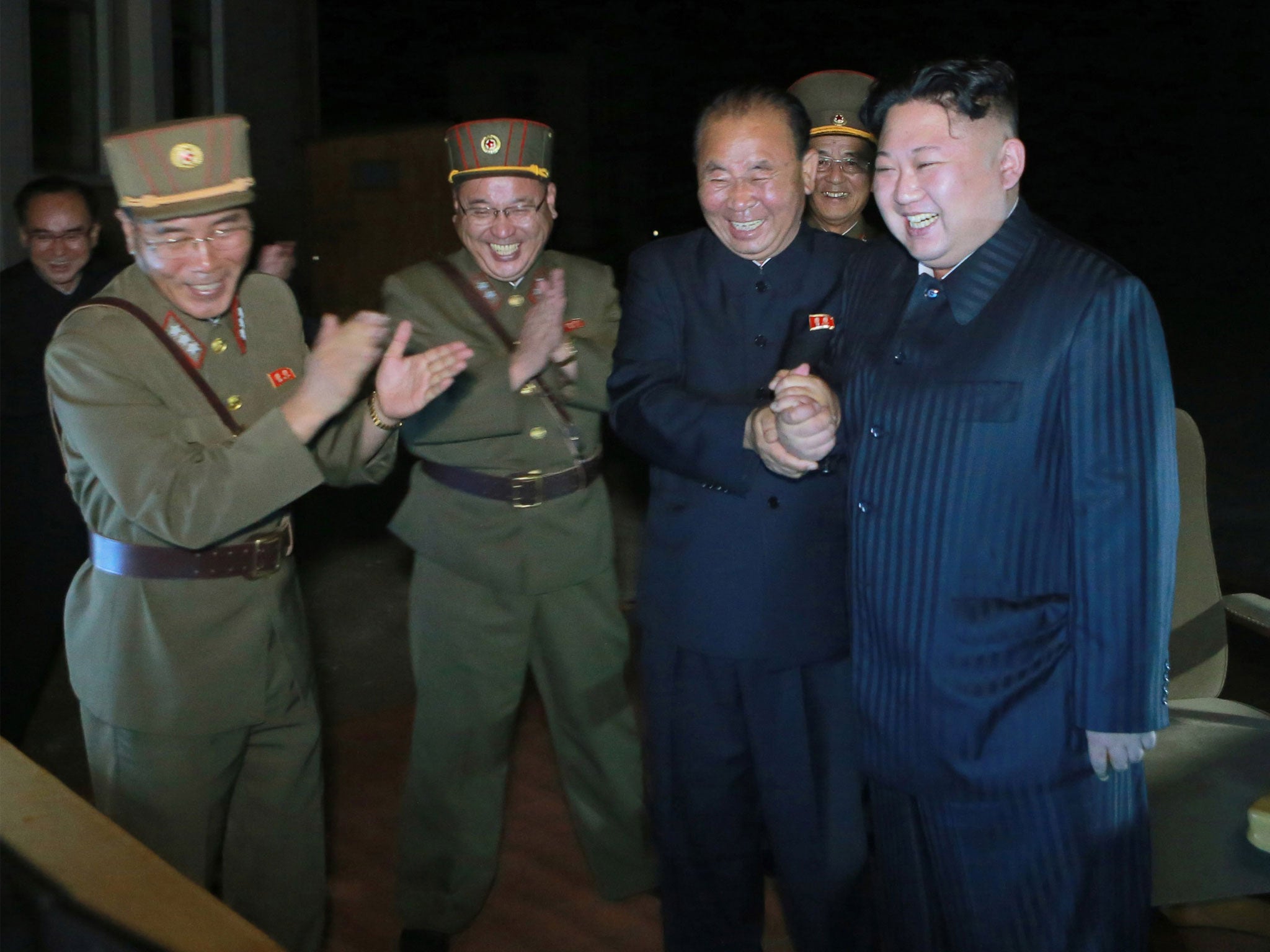North Korea's missile technology means it can strike most of continental US, warn intelligence officials
Latest test displays greater height, range and power thanks to force stabilising engines

North Korea may now be capable of hitting almost the entire continental US after its latest missile test showed it had mastered new technology that allowed its projectiles to travel much further, American intelligence officials said.
The country’s latest test of an intercontinental ballistic missile (ICBM) showed the increased range of Pyongyang’s arsenal, two officials warned.
North Korea’s latest ICBM test on 28 July had greater height, range and power than the previous test because it used force stabilising engines, which counter the effects of winds and other forces that can knock an ascending rocket off course, one said.
The assessment underscores the growing threat posed by Pyongyang's nuclear and missile programs, and could add pressure on Donald Trump's administration to respond.
North Korea said on Saturday it had conducted another successful test of an ICBM that proved its ability to strike America's mainland.
The secretive North's leader, Kim Jong Un, supervised the midnight launch of the missile on Friday night and called it a "stern warning" to the US that it would not be safe from destruction if it tried to attack, the official KCNA news agency said.
However, the two intelligence officials, speaking on condition of anonymity, said Mr Kim wants to develop a nuclear-capable ICBM to deter any attack on his country and gain international legitimacy, not to launch an attack on the US or its allies that he knows would be suicidal.
The Pentagon declined to comment on the US assessment of the missile launch, even as it acknowledged that the latest test represented the longest test flight of any North Korean missile.
"The specifics of our assessment are classified for reasons I hope you understand," Pentagon spokesman Navy Captain Jeff Davis told a news briefing, acknowledging only that the missile could fly at least 3,420 miles, the minimum range for what the Pentagon classifies as an ICBM.
Separately, CNN, quoting a US defence official, reported that North Korea had been showing "highly unusual and unprecedented levels" of submarine activity, in addition to its third "ejection test" this month.
The ejection test was carried out on land at Sinpo Naval Shipyard on Sunday, the US defence official told CNN. They gave no other details about the increased submarine activity.
Ejection tests from submarines usually gauge the ability to "cold launch" missiles, when high pressure steam is used to propel missiles out of launch canisters.
The shipyard is in Sinpo, a port city on the east coast where the North had previously conducted tests of submarine-launched ballistic missiles.

Japan’s Prime Minister, Shinzo Abe, spoke with Mr Trump on Monday and agreed on the need for more action on North Korea, hours after the US Ambassador to the United Nations said Washington was "done talking about North Korea".
The Pentagon acknowledged military-to-military talks with U.S. allies Japan and South Korea after the test.
The latest test of the Hwasong-14, named after the Korean word for Mars, reached an altitude of 2,314.6 miles and flew 620 miles before landing in the waters off the Korean peninsula's east coast, according to KCNA. The missile was first tested on 4 July.
The flight demonstrated successful stage separation, and reliability of the vehicle's control and guidance to allow the warhead to make an atmospheric re-entry under conditions harsher than under a normal long-range trajectory, KCNA said.
Independent weapons experts also said they believed the launch demonstrated many parts of the United States were within range if the missile had been launched at a flattened trajectory.
However, analysts say Pyongyang has yet to show the ICBM can inflict serious damage once it reaches its target.
US and South Korean experts said Japanese video footage capturing the Hwasong-14's re-entry vehicle shortly before it crashed into the sea suggests it failed to survive the extreme heat and pressure after re-entering the Earth's atmosphere following its launch from northern North Korea on Friday.
The apparent failure likely means the North will conduct more flight tests of the Hwasong-14 to ensure the warhead could survive the re-entry from space and hit its intended target, the analysts said.
Join our commenting forum
Join thought-provoking conversations, follow other Independent readers and see their replies
Comments